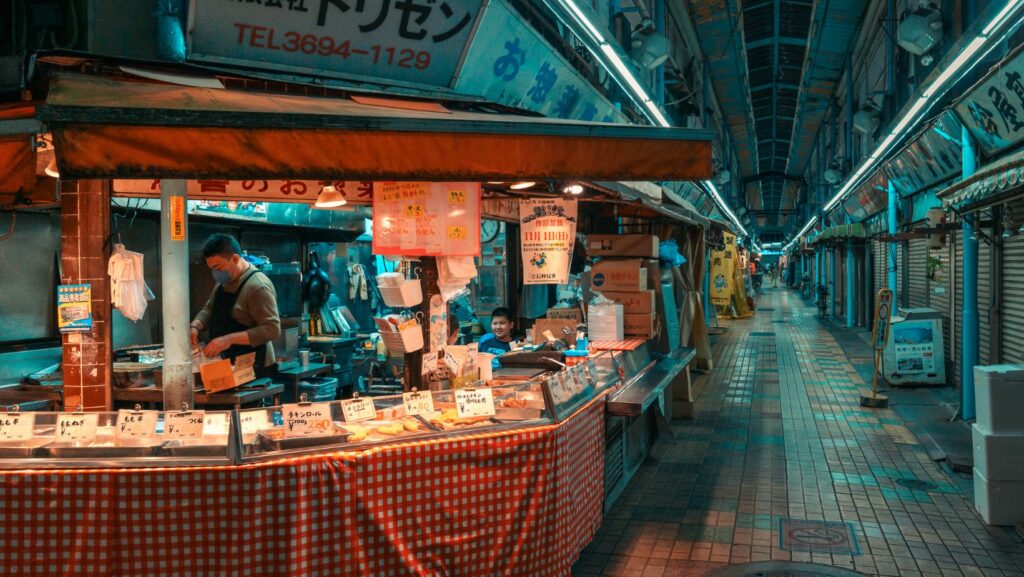In a world where culinary traditions flourish, Japanese cuisine stands out as an embodiment of diversity. The unique flavors and techniques that span across the country tell a story of distinct flavors, which are all united by a shared love for food. From the snowy north to the sun-kissed south, the culinary diversity of Japan dazzles even the most sophisticated dinners. In this article, we will explore the rich diversity of Japanese cuisine and will dive into the mystics of its traditions to try and understand where the true flavors of Japan come from.
North vs. South of Japan
The culinary dichotomy between northern and southern Japan is a testament to the nation’s multifaceted gastronomy. In the northern realms, where frosty winters reign, the diet is often robust and hearty, reflecting the need to stave off the cold. Hokkaido, the northernmost island, boasts an array of comfort foods such as “soup curry” – a heartwarming broth laden with spices and vegetables, and “jingisukan” – a grilled lamb dish with communal camaraderie. The warming nature of these dishes is an embodiment of the northern spirit.
The culinary dichotomy between northern and southern Japan is a testament to the nation’s multifaceted gastronomy. In the northern part of the country, where frosty winters dominate the landscape, the diet is often robust and earthy, mirroring the elements that surround the region. Hokkaido, the northernmost island, is well known for its comfort foods such as “soup curry” – a light curry-flavored soup served with chicken and colorful vegetables and “jingisukan” – a grilled lamb dish that is prepared on a special Japanese grill. The warming nature of these dishes is an embodiment of the region’s northern spirit and earthy flavors.
Conversely, the southern regions are better known for their lighter and more vibrant dishes. Okinawa, the southernmost island, exemplifies this very well. Its tropical fruits and fresh seafood are the staples of its dishes, often resulting in a diet that is not only delicious but also healthy and nutritious. One such example dish is “goya champuru” – a stir fry dish prepped with bitter melon, tofu, egg, and pork belly. The dichotomy between North and south showcases how climate and lifestyle shape not only food preferences but also culinary techniques.
A Palette of Regional Distinctiveness
Beyond the north-south divide, each prefecture weaves its own unique palette of flavors, deeply rooted in historical influences and local produce. In Kyoto, for example, refinement takes center stage. Delicate “kaiseki” cuisine, a multi-course art form, marries taste and aesthetics, evoking the elegance of Japan’s imperial past. The “obanzai” tradition of locally sourced, home-style dishes adds to the city’s distinct gastronomic charm.
Moving further across regions to Hiroshima, “okonomiyaki steals the spot. This savory pancake mirrors the city’s resilience after World War II, as locals pooled their resources to create a dish of collective creativity. The sushi mecca of Tsukiji in Tokyo showcases the meticulous artistry of sushi masters, while Osaka champions “takoyaki” – octopus-filled dough balls that encapsulate the city’s lively spirit.
In Conclusion
The expansive spectrum of Japanese cuisine is a testament to the nation’s rich tapestry of culture, geography, and history. The dichotomy between the north and south, the diversity within prefectures, and the global resonance of Japanese flavors paint a vivid portrait of a cuisine that’s as multifaceted as the land from which it emanates. As chopsticks meet global tables, the love affair with Japanese restaurants continues to flourish, inviting all to savor the symphony of regional variation that has etched its mark on the world stage.











